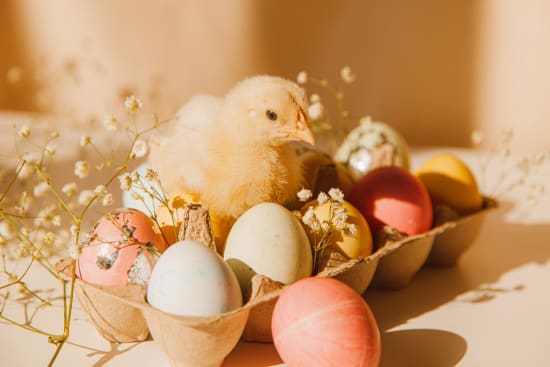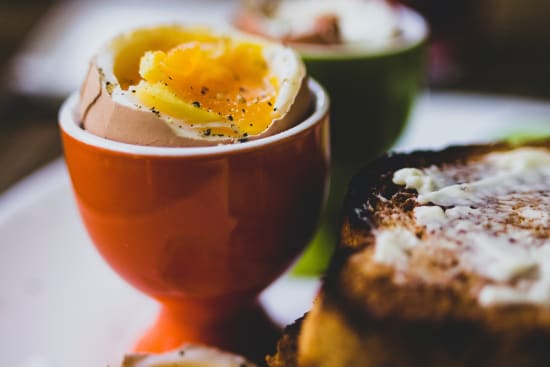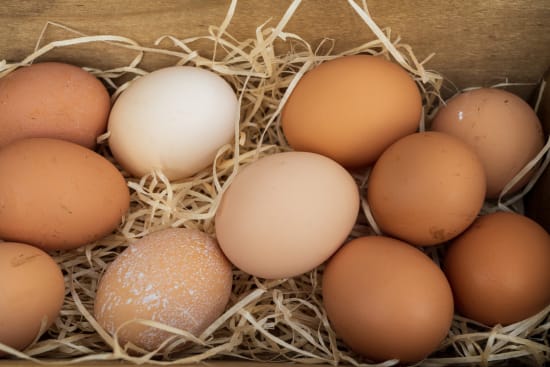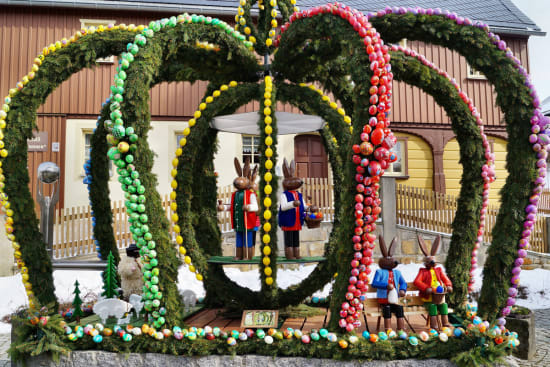Happy Easter!
We'll tell you surprising things about eggs (and Easter eggs) and introduce you to some
amazing Easter events taking place in Switzerland.

How did Easter eggs come about?
From early on, the egg was considered a symbol of new life and rebirth in numerous cultures. This is probably why it became a symbol of Christ's resurrection in Christianity. But in addition, Easter egg eating can also be traced back to Lent, which was introduced in the 7th century. It is well known that those who fast are not allowed to eat meat or eggs. Because people could be told not to eat eggs, but hens could not be forbidden to lay them, there was a surplus of eggs during Lent. To preserve the eggs, they were boiled. With the Reformation in the 16th century, the tradition of egg-gifting emerged: not only family members were given colorful Easter eggs, but also pastors, teachers, and friends. Today, we prefer to eat them ourselves -
or hang them on an «Easter egg tree».



Amazing things about eggs
Eggs are valuable food. They have a high vitamin D and B12 content, a modest fat content (9%) and only about 100 kcal. But did you know that most of the protein is in the yolk, as well as most of the vitamins and all the fat? The term «three-minute egg» is misleading. It comes from a time when eggs were much smaller. That's why today you must reckon with a four and a half to six minutes for the perfect breakfast egg - depending on the size of the egg. The color of the eggshell, on the other hand, is not a matter of chance, but depends on the color of the hen's ear area. If this is white, the shell will most likely be light in color; if the ear area is red, the shell will probably be brownish. And one more thing: yolk color is largely determined by the feed. Corn and green feed tend
to result in yellow yolks, peppers, or turmeric in reddish ones.



Easter customs and events in Switzerland
If you spend Easter in Ticino, you should go to Mendrisio on the evening of Maundy Thursday or Good Friday to see the two processions, which since 2019 are on the UNESCO Intangible Cultural Heritage List. An experience that will also allow you to discover the magical atmosphere of the old town,
illuminated on this occasion with the ancient «trasparenti» (translucent paintings). In Zurich, on Easter Monday, the atmosphere on Rüdenplatz is focused and quiet. Here, crowds of adults and children stand concentrating their attention on eggs and small coins. For with the tradition of «Zwänzgerle», adults throw 20-cent coins at hard-boiled eggs held out by children with the aim of making them lodge in the shell. If they succeed, the thrower keeps the egg and the coin. In Bischofszell Easter is colorful and flowery. There, the fountains are decorated with
flowers before Easter to welcome the colorful season.
More info about spring
High-spirited, flowery, and exuberant spring customs
In the Engadin it's bells, in northwestern Switzerland it's eggs, in Geneva it's flowers, and in Finland it's simply a huge party. Welcome to spring!
Give a little spring!
Show yourself or others that spring is here and create spring feelings, good mood and optimism with spring flowers, colors, and scents.
Flirt with spring flowers
Learn more about popular spring flowers: elegant freesias, charming ranunculi, exotic fragrant hyacinths and delicate muscari.
Happy Easter!
We'll tell you surprising things about eggs (and Easter eggs) and introduce you to some amazing Easter events taking place in Switzerland.
20 March is the «Day of Happiness»!
Are you happy? Do you make others happy? 20 March is International Day of Happiness and therefore a good moment to focus on happiness.
For spring mood or parties at home - FleuropHOME
Whether flowers, plants, garden tools, decorations, drinks, treats and more: FleuropHOME is sure to have it all and will send it to you in a flash by mail.
